Promoting Education in Bournville
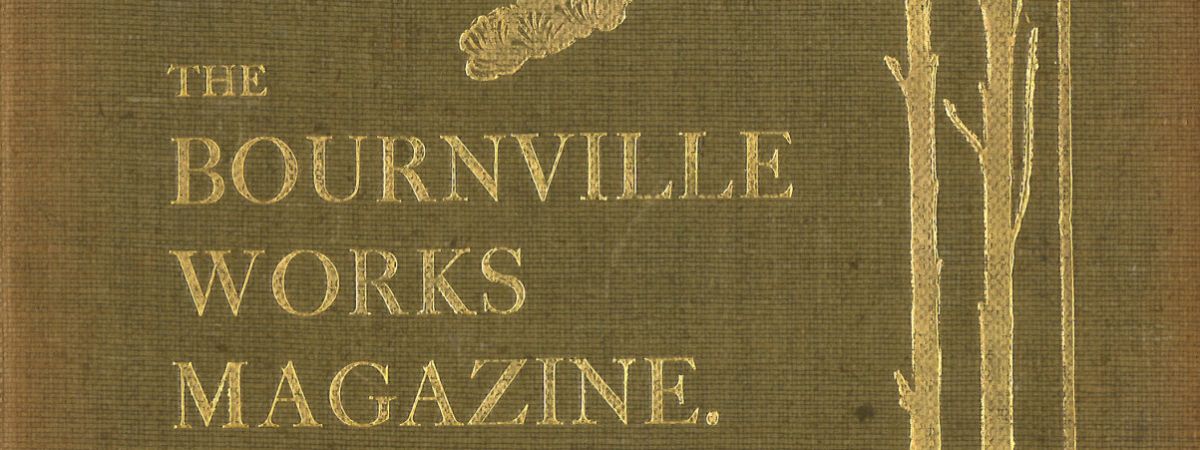
Share
The Bournville Works Magazines (BWM) were published between 1902 and 1968, and contain a wealth of information on daily life in and around Bournville. This included some special editions that focused on royal visits, the life of George and Dame Elizabeth Cadbury, and Bournville during the wars.
Amongst the articles providing updates on the staff, workers, youth groups, and societies within Bournville Village, there was an intention to provide workers with knowledge on various topics and themes. This reflected the wider theme of education as being central to life in Bournville, for those at school and in employment. This article focuses on the first ten years of the Magazines existence, between 1902 and 1912.
A rich variety of educational material
Many of these articles related to health and wellbeing, particularly with regard to a healthy diet and exercise. They were often written by anonymous contributors known as The Doctor, or in some cases The Dentist. For example, a series of articles on Food Values looked at different types of food, in terms of their preparation and nutritional value, with some having as specific a focus as Poultry and Game (December 1906), and Fish (February 1907).
The Magazines also contain articles reporting the content of lectures, which took place at the Continuation School. Just some of the topics included in lectures were on Birds and Bird Photography, Beethoven and his Works, Old Flanders, East London, and W.E. Gladstone, demonstrating the variety of interests which Bournville workers had in the early twentieth century.
Volumes also referred to Travellers Tales, in which people related their experiences of travelling to different places in the world, giving workers an educational insight into other regions they may not have previously thought about. Some examples include South Africa and the West Indies - referred to in reports from a youth lecture in January 1906.
A further example of the articles that were presented are how a series of articles in Volume 5, between 1906 and 1907, gave a series on An Introduction to the Study of Economics, by George Shann, M.A., who was a fellow of the Royal Economic Society, with socialist principles and who was involved with the Labour Party in Birmingham.
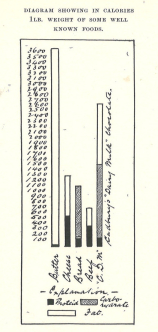
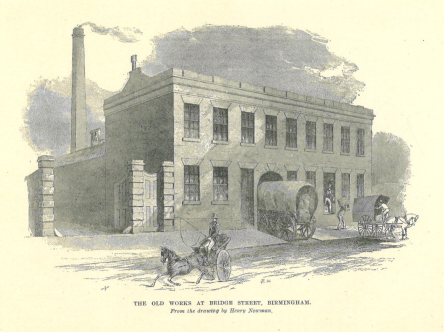
Left: A diagram accompanying an article which highlights healthy living, and demonstrates the calorie intake for certain foods.
Right: The Bridge Street Works, the original location of the Cadbury factory in central Birmingham, before they moved to Bournville.
Celebrating Local History
Articles also related to history, including local history, such as Memories of Bridge Street and Early Bournville, published in September 1909, and an article from March 1907, which looked at the Bournbrook Hall which at that time had been recently demolished. In Building Bournville- a community research project that investigated the working class and industrial history of Bournville, there is a reference to how in the works magazines there is a visibly strong desire to start a local history scheme. This aimed at creating a collection of photographs and lantern slides, originals or from old maps or drawings, for articles, lectures and class-lessons, to demonstrate the history of the district.
The project report also emphasises the diversity of the curriculum in the infant and junior schools, and the Day Continuation Centre. As suggested, The broad curriculum and social opportunities allowed attendees to not only develop skills they would need in the working and professional world but also expand their own interests and passions helping them to become both participating members of the community and individuals in their own right. The BWMs affirm how the Day Continuation Centre placed an emphasis on the value and importance of social service in the life of the company but also felt it important to push attendees to grown on their own.
Broadening the mind
They also sought to provide workers within insights on social issues and life at that time, such as an article titled A Glimpse of Sanatorium Life: A Visit to the Knightwick Sanatorium (December 1906), and Life in a Colliery- the experience of working in a coal mine and the buildings and equipment associated with it (January 1907).
Other topics that were covered range from a series on the Story of Football, to glacial boulders found in Bournville, to articles on Labour in Portuguese West Africa. These articles were all contained within Volume VIII, which was released monthly between November 1909 and October 1910.
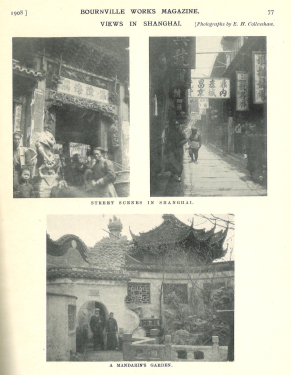
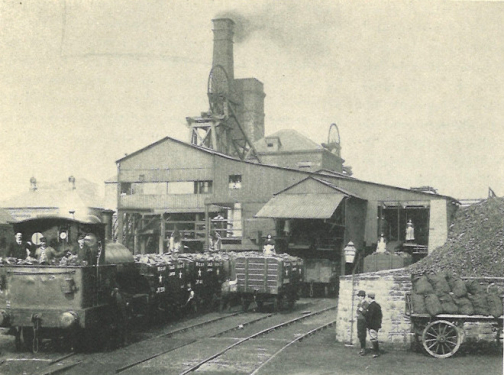
Left: An article providing 'View of Shanghai, which took the reader to far flung places.
Right: An article describing a pit head at a coal mine at Wigan Cole and Iron Company.
The story of the erratic boulders
Sometimes people with specialised knowledge contributed to such articles. For example, Professor Charles Lapworth F.R.S., the University of Birminghams first Geology professor, and whom the Lapworth Museum of Geology is named after, contributed an article on The Bournville Boulder found during this period, part of the collection of Erratic Boulders found in Birmingham.
Louis Barrow, born in Kings Norton in 1865, and was connected to the Cadbury family by Johns marriage to Candia Barrow. He spent many years at Mason College (the precursor to the University of Birmingham), where he studied Geology under Lapworth. He would later become Chief Engineer of Bournville Works at a time of expansion for the factory and the village.
Overtime, excavations around the Bournville Works and Cotteridge Park unearthed numerous boulders, and Barrow then discussed these boulders with Lapworth. The correspondence between the two was archived and survives largely due to the BWM, which contains several articles on erratic boulders and their place in the geological story of the ice age. This is one example of how work of academic interest was made accessible on a wider scale via the BWM.
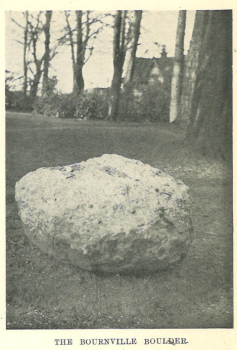
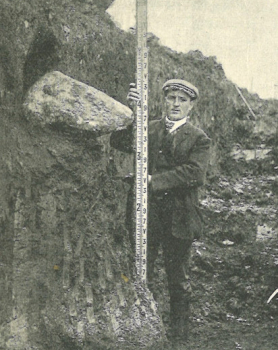
Above: The Bournville Boulder and measuring uncovered erractics.
The clear and diverse focus on education in the BWM reflects both the efforts made by the Cadburys and others in Bournville to provide a strong education for workers and their families, but also how that interest was reciprocated by the workers themselves, in particular the editors of the BWM.
Daniel Bedford, Volunteer